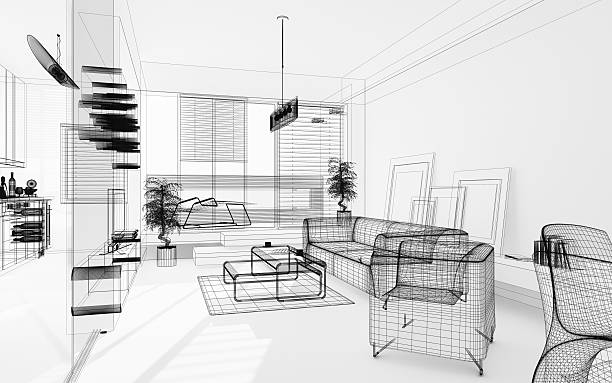Design Thinking: A Human-Centered Approach to Creative Problem-Solving
Design thinking is a powerful and innovative approach to problem-solving that revolves around understanding the needs and desires of end-users. It goes beyond conventional methods and embraces a human-centered perspective to create meaningful solutions. By incorporating empathy, collaboration, and experimentation, design thinking helps tackle complex challenges across various industries and domains.
At the heart of design thinking is empathy. Designers immerse themselves in the user's world, seeking to understand their needs, pain points, and aspirations. By putting themselves in the user's shoes, they gain valuable insights that drive the ideation process.
Once the user's needs are understood, the design thinking process involves defining the problem in a way that guides the creative process effectively. By reframing the challenge, designers can uncover new possibilities and generate more innovative solutions.
Ideation is a brainstorming phase that encourages the generation of diverse ideas without judgment. Design thinking thrives on creative thinking techniques like mind mapping, brainstorming sessions, and "thinking outside the box."
Designers create prototypes or rough representations of their ideas to get early feedback from users. This step allows them to validate assumptions, refine concepts, and identify potential improvements. The iterative nature of design thinking ensures that the final product or solution addresses users' real needs effectively.
Design thinking emphasizes rapid testing and gathering feedback from users at every stage. This feedback loop allows designers to make data-driven decisions and fine-tune their concepts, ensuring that the end product resonates with the intended audience.
Design thinking embraces a collaborative approach, bringing together people from various disciplines and backgrounds. By combining different perspectives, the process gains richness and creativity, leading to more innovative and well-rounded solutions.
Once a design solution has been validated and refined, the next step is implementation. This may involve cross-functional coordination, resource allocation, and a clear roadmap for execution. Scaling a successful design requires careful planning and adaptation to different contexts.
Design thinking acknowledges that the creative process is never truly complete. Continuously seeking feedback and learning from both successes and failures allows for ongoing improvements and refinements.
Design thinking is not limited to any specific industry or sector. Its adaptability and versatility make it valuable for product design, service delivery, organizational change, and even societal challenges. Embracing this human-centered approach empowers individuals and organizations to create meaningful and impactful solutions that cater to the needs and aspirations of the people they serve.
Design thinking is a powerful and innovative approach to problem-solving that revolves around understanding the needs and desires of end-users. It goes beyond conventional methods and embraces a human-centered perspective to create meaningful solutions. By incorporating empathy, collaboration, and experimentation, design thinking helps tackle complex challenges across various industries and domains.
- Empathy: Understanding the User
At the heart of design thinking is empathy. Designers immerse themselves in the user's world, seeking to understand their needs, pain points, and aspirations. By putting themselves in the user's shoes, they gain valuable insights that drive the ideation process.
- Define the Problem: Framing the Challenge
Once the user's needs are understood, the design thinking process involves defining the problem in a way that guides the creative process effectively. By reframing the challenge, designers can uncover new possibilities and generate more innovative solutions.
- Ideation: Cultivating Creativity
Ideation is a brainstorming phase that encourages the generation of diverse ideas without judgment. Design thinking thrives on creative thinking techniques like mind mapping, brainstorming sessions, and "thinking outside the box."
- Prototyping: Testing and Iteration
Designers create prototypes or rough representations of their ideas to get early feedback from users. This step allows them to validate assumptions, refine concepts, and identify potential improvements. The iterative nature of design thinking ensures that the final product or solution addresses users' real needs effectively.
- Testing and Feedback: Ensuring User-Centricity
Design thinking emphasizes rapid testing and gathering feedback from users at every stage. This feedback loop allows designers to make data-driven decisions and fine-tune their concepts, ensuring that the end product resonates with the intended audience.
- Collaboration: Building Diverse Perspectives
Design thinking embraces a collaborative approach, bringing together people from various disciplines and backgrounds. By combining different perspectives, the process gains richness and creativity, leading to more innovative and well-rounded solutions.
- Implementing and Scaling: Making Ideas Reality
Once a design solution has been validated and refined, the next step is implementation. This may involve cross-functional coordination, resource allocation, and a clear roadmap for execution. Scaling a successful design requires careful planning and adaptation to different contexts.
- Continuous Improvement: Learning from Experience
Design thinking acknowledges that the creative process is never truly complete. Continuously seeking feedback and learning from both successes and failures allows for ongoing improvements and refinements.
Design thinking is not limited to any specific industry or sector. Its adaptability and versatility make it valuable for product design, service delivery, organizational change, and even societal challenges. Embracing this human-centered approach empowers individuals and organizations to create meaningful and impactful solutions that cater to the needs and aspirations of the people they serve.




